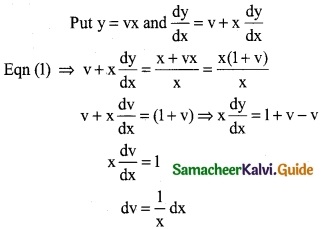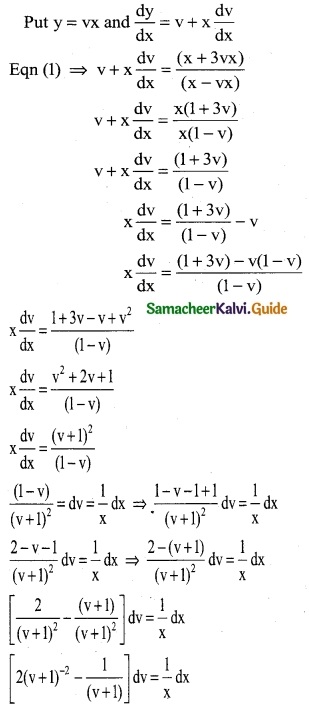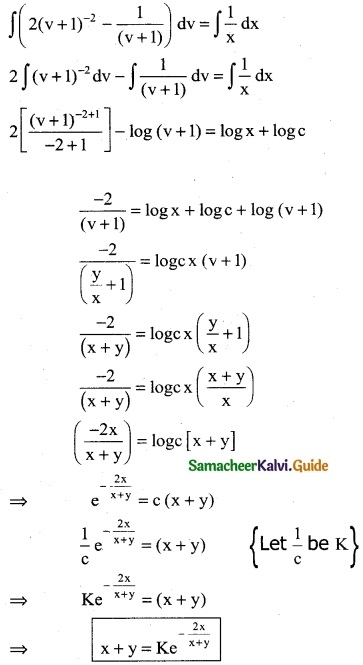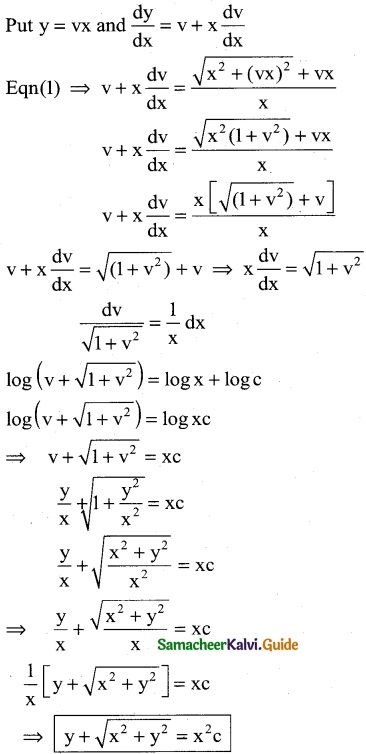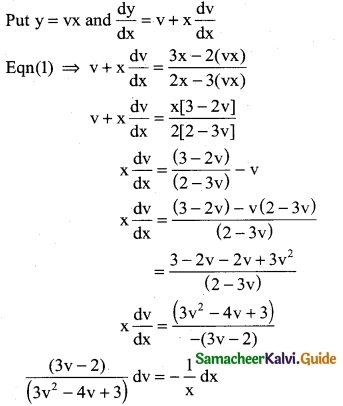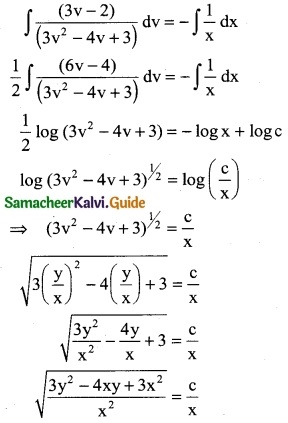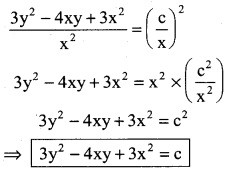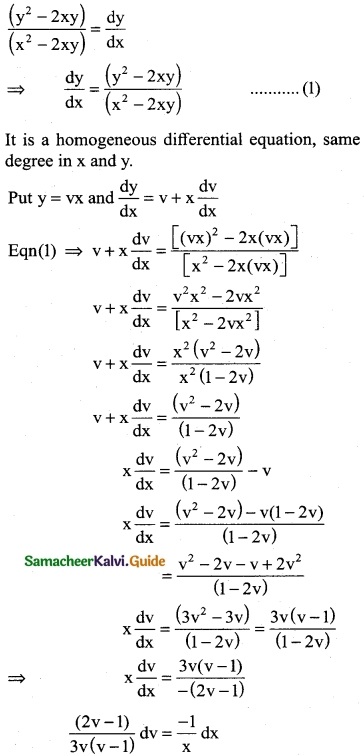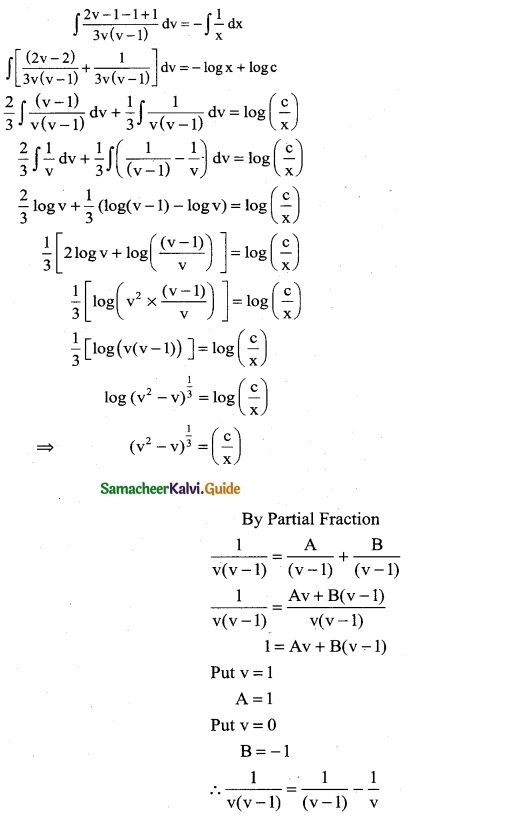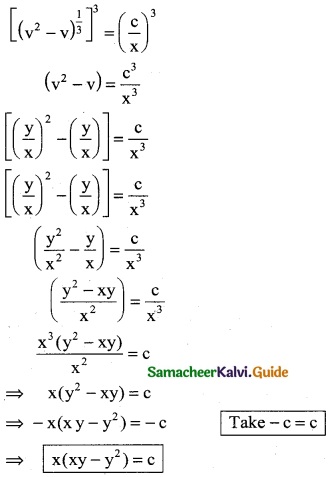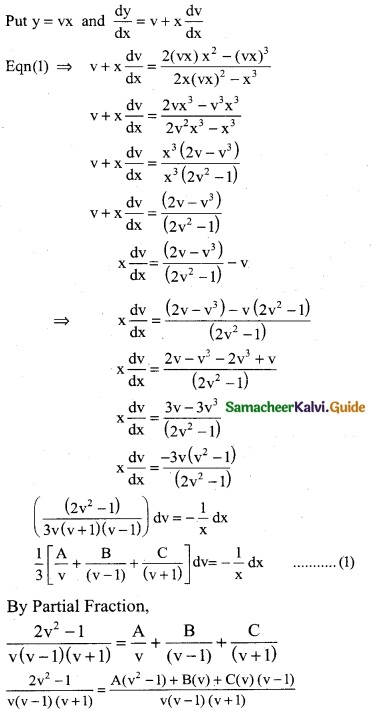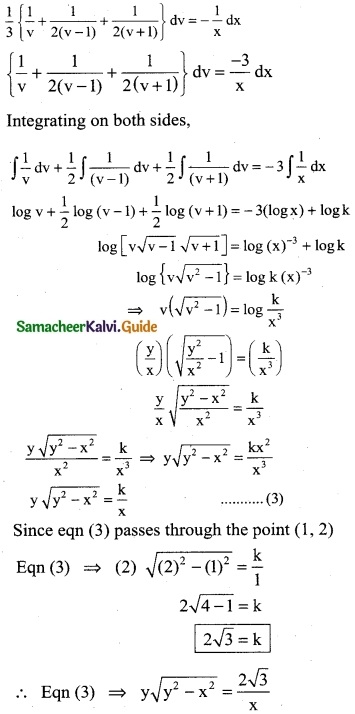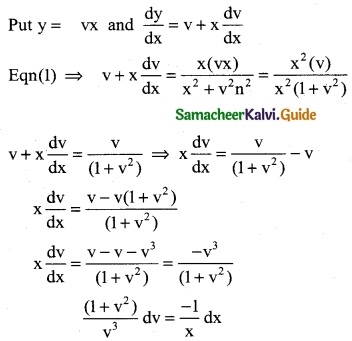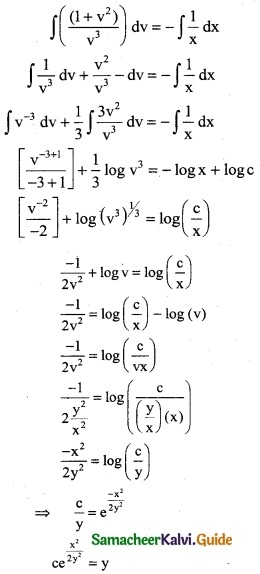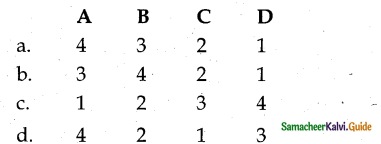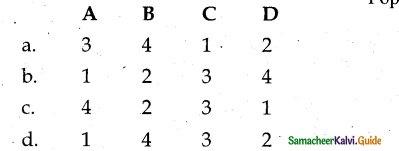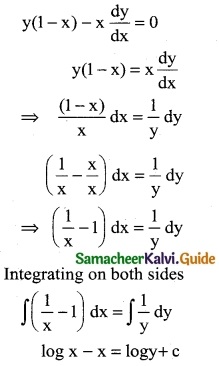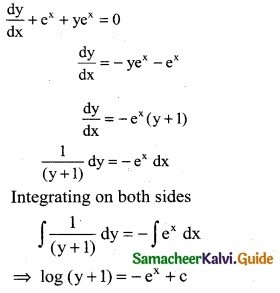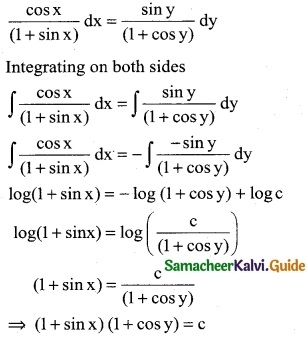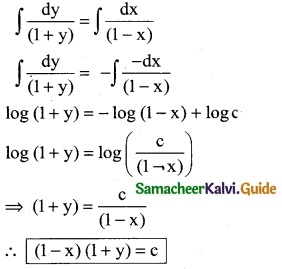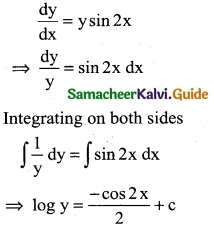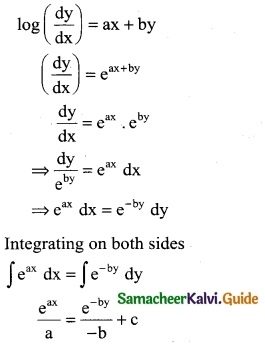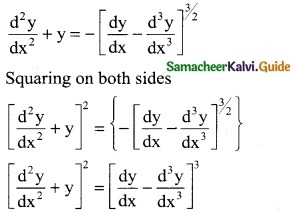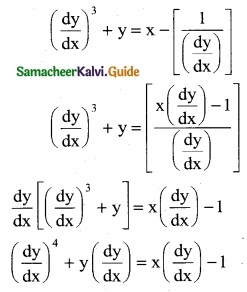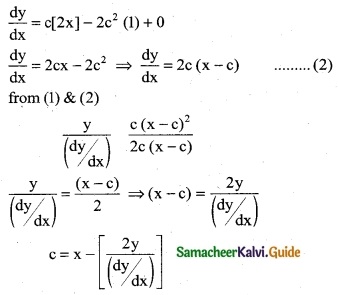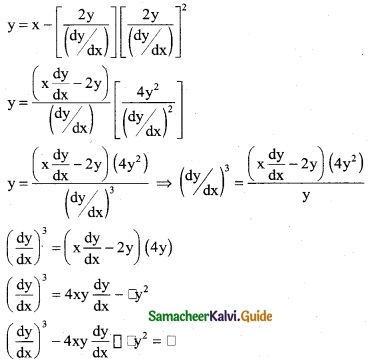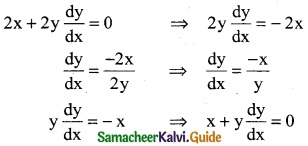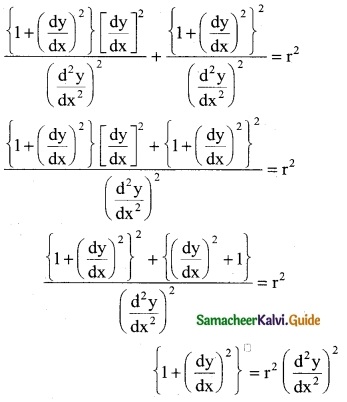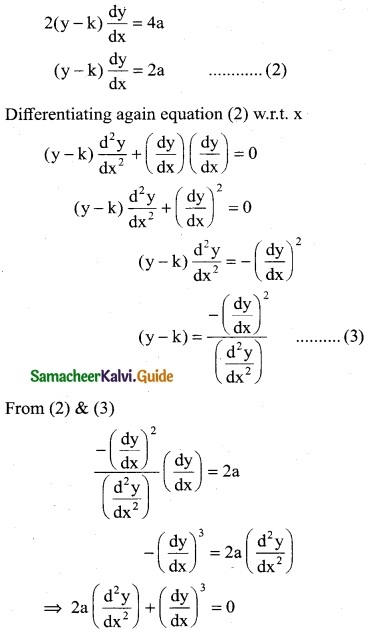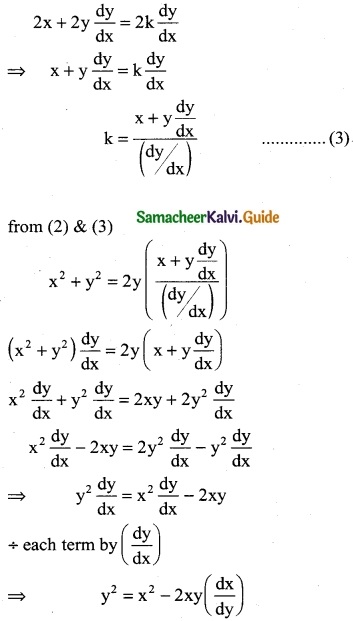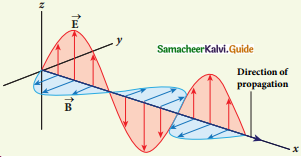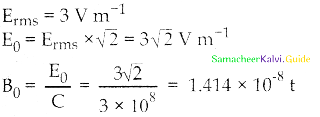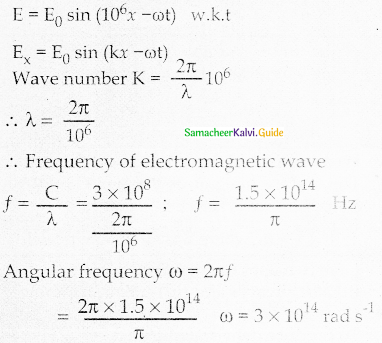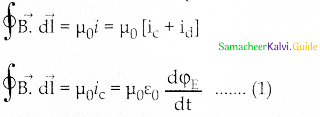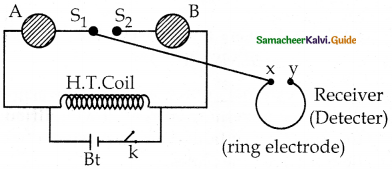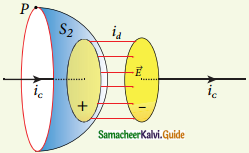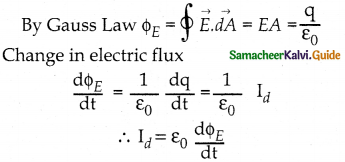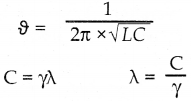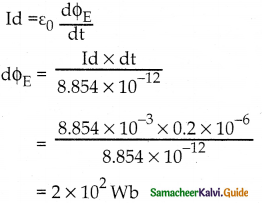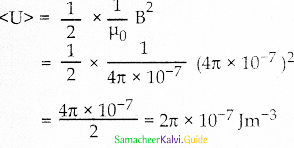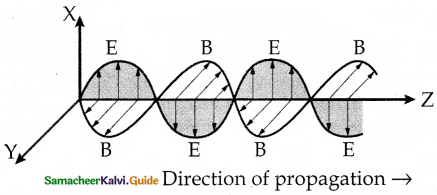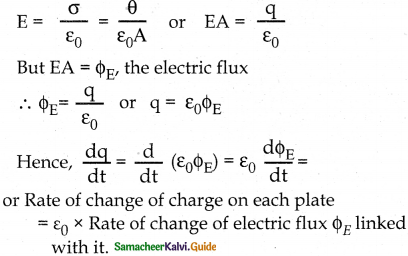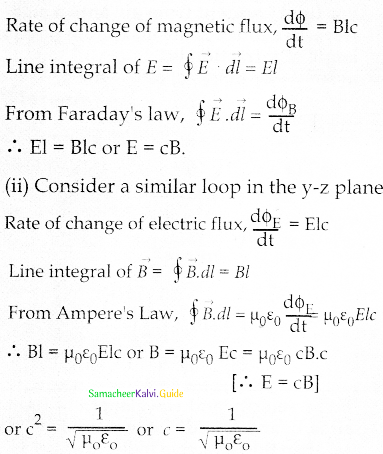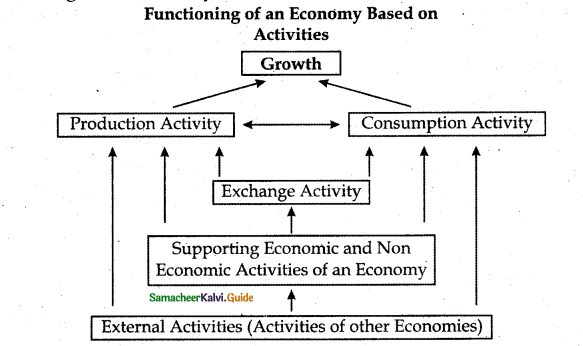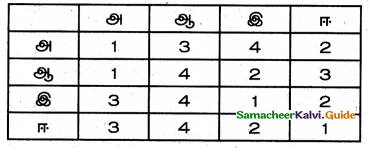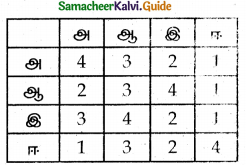Tamilnadu State Board New Syllabus Samacheer Kalvi 12th Economics Guide Pdf Chapter 3 Theories of Employment and Income Text Book Back Questions and Answers, Notes.
Tamilnadu Samacheer Kalvi 12th Economics Solutions Chapter 3 Theories of Employment and Income
12th Economics Guide Theories of Employment and Income Text Book Back Questions and Answers
PART – A
Multiple Choice questions
Question 1.
Every able bodied person who is willing to work at the prevailing wage rate is employed called as ……………..
a) Full employment
b) Under employment
c) Unemployment
d) Employment opportunity
Answer:
a) Full employment
Question 2.
Structural unemployment is a feature in a ……………
a) Static society
b) Socialist society
c) Dynamic society
d) Mixed economy
Answer:
c) Dynamic society
![]()
Question 3.
In disguised unemployment, the marginal productivity of labour is ……………..
a) Zero
b) One
c) Two
d) Positive
Answer:
a) Zero
Question 4.
The main concention of the classical Economic Theory is …………..
a) Under employment
b) Economy is always in the state of equilibrium
c) Demand creates its supply
d) Imperfect competition
Answer:
b) Economy is always in the state of equilibrium
![]()
Question 5.
J.B. say is a ……………
a) New classical Economist
b) Classical Economist
c) Modern Economist
d) New Economist
Answer:
b) Classical Economist
Question 6.
According to keynes, which type of unemployment prevails in capitalist economy?
a) Full employment
b) Voluntary unemployment
c) Involuntary unemployment
d) Under employment
Answer:
d) Under employment
![]()
Question 7.
The core of the classical theory of employment is
a) Law of Diminishing Return
b) Law of demand
c) Law of markets
d) Law of consumption
Answer:
c) Law of markets
Question 8.
Keynes attributes unemployment to ……………………..
a) A lack of effective supply
b) A lack of effective demand
c) A lack of both
d) None of the above
Answer:
b) A lack of effective demand
![]()
Question 9.
………………………….. Flexibility brings equality between saving and investment.
a) Demand
b) Supply
c) Capital
d) Interest
Answer:
d) Interest
Question 10.
…………………. theory is a turning point in the development of modern economic theory.
a) Keynes
b) Say’s
c) Classical
d) Employment
Answer:
a) Keynes
![]()
Question 11.
The basic concept used in keynes Theory of Employment and Income is ……………….
a) Aggregate demand
b) Aggregate supply
c) Effective demand
d) Marginal propensity to consume
Answer:
d) Marginal propensity to consume
Question 12.
The component of aggregate demand is …………………
a) Personal demand
b) Government expenditure
c) Only export
d) Only import
Answer:
b) Government expenditure
![]()
Question 13.
Aggregate supply is equal to ………….
a) ‘C + I + G
b) C+S+T + (x-m)
c) C+ S+ T+ (x – m)
d) C+ S+ T+ Rf
Answer:
d) C+ S+ T+ Rf
Question 14.
Keynes theory pursues to replace Laissez Faire by ………………….
a) No government intervention
b) Maximum intervention
c) State intervention in certain situation .
d) Private Sector Intervention
Answer:
c) State intervention in a certain situation
![]()
Question 15.
In Keynes theory of employment and income ……………………… is the basic cause of economic depression.
a) Less production
b) More demand
c) Inelastic supply
d) Less aggregate demand in relation to productive capacity
Answer:
d) Less aggregate demand in relation to productive capacity
Question 16.
Classical theory advocates ………………
a) Balanced budget
b) Unbalanced budget
c) Surplus budget
d) Deficit budget
Answer:
a) Balanced budget
![]()
Question 17.
Keynes theory emphasized on ………………….. equilibrium.
a) Very short run
b) Short-run
c) Very long run
d) Long run
Answer:
b) Short-run
![]()
Question 18.
According to classical theory, the rate of interest is a reward for …………….
a) Investment
b) Demand
c) Capital
d) Saving
Answer:
d) Saving
![]()
Question 19.
In Keynes theory, the demand for and supply of money are determined by …………………..
a) Rate of interest
b) Effective demand
c) Aggregate demand
d) Aggregate supply
Answer:
a) Rate of interest
Question 20.
Say’s law stressed the operation of ……………………. in the economy.
a) Induced price mechanism
b) Automatic price mechanism
c) Induced demand
d) Induced investment
Answer:
b) Automatic price mechanism
![]()
PART -B
Answer the following questions in one or two sentences.
Question 21.
Define full employment.
Answer:
Full employment refers to a situation in which every able-bodied person who is willing to work at the prevailing wage rate, is employed. In other words, full employment means that persons who are willing to work and able to work must have employment or a job.
Question 22.
What is the main feature of rural unemployment?
Answer:
The existence of disguised unemployment and seasonal unemployment is the main feature of rural unemployment.
![]()
Question 23.
Give a short note on frictional unemployment.
Answer:
Frictional Unemployment (Temporary Unemployment):
- Frictional unemployment arises due to an imbalance between the supply of labour and demand for labour.
- This is because of immobility of labour, lack of necessary skills, break down of machinery, shortage of raw materials etc.
- The persons who lose jobs and in search of jobs are also included under frictional unemployment.
Question 24.
Give reasons for labour retrenchment at the present situation.
Answer:
- Capital intensive techniques.
- Invention and innovations
- Labour saving devices are reasons for retrenchment.
![]()
Question 25.
List out the assumptions of Say’s law.
Answer:
The Say’s Law of the market is based on the following assumptions:
- No single buyer or seller of commodity or input can affect the price.
- Full employment.
- People are motivated by self-interest and self-interest determines economic decisions.
- The laissez-faire policy is essential for an automatic and self-adjusting process of full employment equilibrium. Market forces determine everything right.
- There will be perfect competition in labour and product market.
- There is wage-price flexibility.
- Money acts only as a medium of exchange.
- Long-run analysis.
- There is no possibility for overproduction or unemployment.
Question 26.
What is effective demand?
Answer:
- Effective demand denotes money actually spent by the people on products of industry.
- Effective demand equals national income.
![]()
Question 27.
What are the components of aggregate supply?
Answer:
Aggregate demand has the following four components:
- Consumption demand
- Investment demand
- Government expenditure and
- Net Export (export-import)
PART – C
Answer the following questions in a paragraph.
Question 28.
Explain the following in short
Answer:
(i) Seasonal unemployment
This type of unemployment occurs during certain seasons of the year.
(ii) Frictional unemployment
This type of unemployment arises due to an imbalance between supply and demand for labour.
iii) Educated unemployment
Sometimes educated people are underemployed or unemployed when qualification does not match the job.
![]()
Question 29.
Write a short note on the implications of Say’s law.
Answer:
Implications of Say’s Law:
- There is no possibility for overproduction or unemployment.
- If there exist unutilized resources in the economy, it is profitable to employ them up to the point of full employment. This is true under the condition that factors are willing to accept rewards on a par with their productivity.
- As an automatic price mechanism operates in the economy, there is no need for government intervention. (However, J.M. Keynes emphasized the role of the State)
- Interest flexibility brings about equality between saving and investment.
- Money performs only the medium of exchange function in the economy, as people will not hold idle money.
Question 30.
Explain Keynes theory in the form of a flow chart.
Answer:
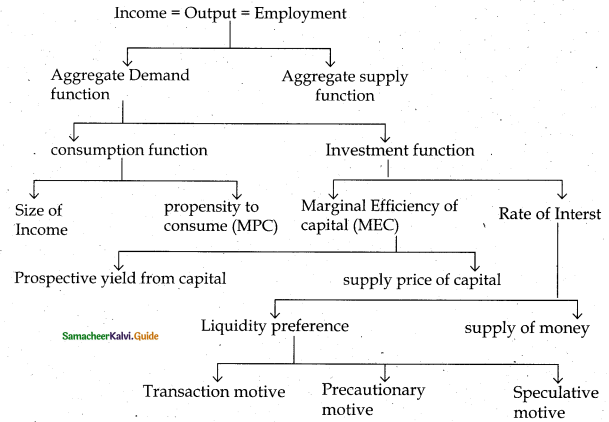
Question 31.
What do you mean by aggregate demand? Mention its components.
Answer:
- The aggregate demand is the amount of money which entrepreneurs expect to get by selling the output produced by the number of labourers employed.
- Therefore, it is the expected income or revenue from the sale of output at different levels of employment.
- Aggregate demand has the following four components:
- Consumption demand
- InvestmenTdemand
- Government expenditure and
- Net Export (export-import)
![]()
Question 32.
Explain aggregate supply with the help of a diagram.
Answer:
In figure two aggregate supply curves are drawn with the assumption of fixed money wages and variable wages…
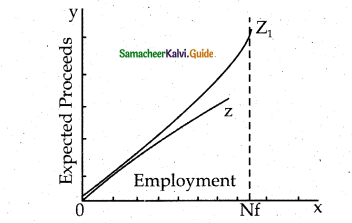
- Z curve is linear where money wages remain fixed; Z1.curve is non-linear since wage rate increases with employment.
- At full employment level (Nf) aggregate supply curve becomes inelastic.
- The slope of the aggregate supply curve depends on the relationship between employment and productivity.
- Based on this relation, the aggregate supply curve is expected to slope upwards. In reality, the aggregate supply curve will be like Z1.
- Therefore, the aggregate supply depends on the relationship between price and wages.
Question 33.
Write any five differences between classicism and Keynesianism.
Answer:
S.No | Keynesianism | Classicism |
| 1. | Short-run equilibrium | Long-run equilibrium |
| 2. | Saving is a vice | Saving is a social virtue |
| 3. | State intervention is advocated | Laissez-faire policy |
| 4. | Rate of interest is a flow | Rate of interest is a stock |
| 5. | Demand creates its own supply | Supply creates its own demand |
PART – D
Answer the following questions on the about page.
Question 34.
Describe the types of unemployment.
Answer:
1. Cyclical unemployment:
In a business cycle during the period of recession and depression, income and output fall leading to widespread unemployment. It can be cured by public investment or expansionary monetary policy.
2. Seasonal unemployment:
This type of unemployment occurs during certain seasons of the year.
Eg : Agriculture and Agro-based industries.
3. Frictional unemployment:
This type of unemployment arises due to an imbalance between supply and demand for labour.
4. Educated unemployment:
Sometimes educated people are underemployed or unemployed when qualification does not match the job.
5. Technical unemployment:
Modern technology being capital intensive requires less labourers and con-tributes to technological unemployment.
6. Structural unemployment:
Structural unemployment is due to a drastic change in the structure of society.
7. Disguised unemployment:
A person is said to be disguisedly unemployed if his contribution top out-put is less than what he can produce by working for normal hours per day. In this situation, the marginal productivity of labour is zero or less or negative.
![]()
Question 35.
Critically explain Say’s law of the market.
Answer:
Criticisms of Say’s Law: The following are the criticisms against Say’s law:
- According to Keynes, supply does not create its demand. It is not applicable where demand does not increase as much as production increases.
- The automatic adjustment process will not remove unemployment. Unemployment can be removed by an increase in the rate of investment.
- Money is not neutral. Individuals hold money for unforeseen contingencies while businessmen keep a cash reserves for future activities.
- Say’s law is based on the proposition that supply creates its own demand and there is no overproduction. Keynes said that overproduction is possible.
- Keynes regards full employment as a special case because there is underemployment in capitalist economies.
- The need for state intervention arises in the case of general overproduction and mass unemployment.
![]()
Question 36.
Narrate the equilibrium between ADF and ASF with a diagram.
Answer:
- Under the Keynes theory of employment, a simple two-sector economy is taken to understand the equilibrium between ADF and ASF.
- All the decisions concerning consumption expenditure are taken by the house-holds, while the business firms take decisions concerning investment.
- It is also assumed that the consumption function is linear and planned investment is autonomous.

- In the figure, the aggregate demand and aggregate supply reach equilibrium at point E. The employment level is No at that point.
- At ON1 employment, the aggregate supply is N1R1 But they are able to produce M1N1 M1 R1To the expected level of profit is M1R1 attain this level of profit, entrepreneurs will employ more labourers.
- The tendency to employ more labour will stop once they reach E. At all levels of employment beyond, ONo, the AD curve is below the AS curve indicating loss to the producers.
- Hence they will never employ more than ONo labor. Thus effective demand concept becomes a crucial point in determining the equilibrium level of output in the capitalist economy in the Keynesian system.
- The equilibrium level of employment need not be the full employment level (N)1. The difference between (No – Nf )is the level of unemployment.
- Thus Effective demand is significant to explain the under-employment equilibrium.
Question 37.
Explain the differences between classical theory and Keynes theory:
Answer:
Keynesianism | Classicism |
| 1.Short- run equilibrium | Long-run equilibrium |
| 2. Saving is a vice | Saving is a social virtue |
| 3. The function of money as a medium of exchange and store of value | The function of money is to act as a medium of exchange |
| 4. Macro approach to the national problem | Micro foundation to macro problems |
| 5. State intervention is advocated | Champions of Laissez-faire policy |
| 6. Applicable to both full employment and less than full employment level | Applicable only to the full employment situation. |
| 7. Capitalism has inherent contradictions | Capitalism is well and good |
| 8. Unbalanced budget | Balanced Budget |
| 9. Rate of interest is a flow | Rate of interest is a stock |
| 10. Demand creates its own supply | Supply creates its own demand. |
12th Economics Guide Theories of Employment and Income Additional Important Questions and Answers
I. Match the following
Question 1.
a) J.B. Say – 1) Classical Economists
b) Adam Smith – 2) Law of Market
c) AC. Pigou – 3) Effective Demand
d) J.M.Keynes – 4) Wealth of Nations
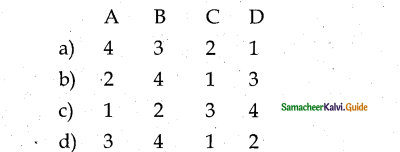
Answer:
b) 2 4 1 3
Question 2.
a) Rural Areas – 1) Educated unemployment
b) Urban Areas – 2) Seasonal unemployment
c) Lack of employable skills – 3) Structural unemployment
d) Lack of demand – 4) Frictional unemployment
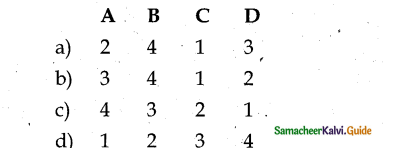
Answer:
a) 2 4 13
Question 3.
a) MPC – 1) C + I + G + (X – M)
b) MEC – 2) C + S + T + Rf
c) AD – 3) Marginal propensity to consume ’
d) AS – 4) Marginal Efficiency of capital
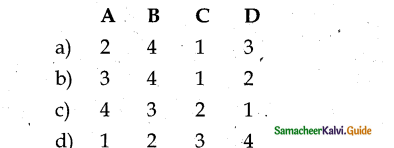
Answer :
d) 3 4 1 2.
![]()
II. Choose the correct pair
Question 1.
a) Long-run – Full employment
b) Market Economy – Government control
c) Keynes theory – Long run
d) Structural unemployment – Agriculture
Answer:
a) Long-run – Full employment
Question 2.
a) C – Private savings
b) S – Consumption Expenditure
c)T – Net tax payments ‘
d) Rf – Tax rate
Answer:
c) T – Net tax payments
![]()
Question 3.
a) Effective demand – Percapita Income
b) Equilibrium – Full employment
c) Aggregate supply function – Elastic
d) Say’s law – Underemployment
Answer:
b) Equilibrium – Full employment
III. Choose the incorrect pair
Question 1.
a) Price Mechanism- Lassiez faire Economy
b) J.B. Say – Classical theory
c) J.M. Keynes – Macro Economics
d) Law of the market – Underemployment
Answer:
d) Law of the market – Underemployment
Question 2.
a) Business cycle
b) Seasonal unemployment
c) New technology
d) Disguised unemployment
Answer:
b) Seasonal unemployment – Industrial sector
![]()
Question 3.
a) Aggregate supply price – Income
b) Consumption function – Straight line
c) Keynes theory – Induced Investment
d) Equilibrium – Underemployment
Answer:
d) Equilibrium – Underemployment
IV. Choose the correct statement
Question 1.
a) Equilibrium level of employment refers to full employment.
b) According to Say’s law demand creates its own supply.
c) Adam smith published his books “An enquiry into the nature and causes of the wealth of nations” in the year 1776.
d) Technical unemployment is due to drastic change in the structure of the society
Answer:
c) Adam smith published his books “An enquiry into the nature and causes of wealth of nations” in the year 1776.
![]()
Question 2.
Assumptions of Say’s law of markets :
a) Existence of underemployment.
b) Money is a prominent force in the economy.
c) Government interference is a must.
d) Long-run analysis.
Answer: Long run analysis.
Question 3.
a) Keynes supported the ideas of classical Economists.
b) An increase in the aggregate effective demand would increase the level of employment.
c) Effective Demand is less than National income.
d) Price refers to the cost of production.
Answer:
b) An increase in the aggregate effective demand would increase the level of employment.
![]()
V. Choose the incorrect statement
Question 1.
a) Keynes defines full employment as the absence of involuntary unemployment.
b) Full employment generally refers to the full employment of labour force of a country.
c) In developed countries the unemployment is purely structural.
d) Disguised unemployment occurs when more people are than what is actually required.
Answer:
c) In developed countries the unemployment is purely structural.
Question 2.
a) In Disguised unemployment and seasonal unemployment are seen in rural areas.
b) Due to Globalisation, a large number of people move from rural areas to urban areas.
c) Cyclical unemployment can be cured by public investment or expansionary monetary policy.
d) Seasonal unemployment occurs during certain seasons of the year.
Answer:
b) Due to Globalisation, a large number of people move from rural areas to urban areas.
![]()
Question 3.
a) In disguised unemployment marginal productivity of labour is positive.
b) Laissez-faire is a situation found in Market Economy.
c) According to J.B.Say “supply creates its own demand”.
d) Aggregate supply curve is inelastic.
Answer:
c) According to J.B.Say “supply creates its own demand”.
VI. Pick the odd one out:
Question 1.
The components of Aggregate supply are
a) Total Expenditure
b) Private savings
c) Net tax payments
d) Transfer payments to the foreigners
Answer:
a) Total Expenditure
Question 2.
The components of Aggregate Demand are
a) Consumption demand
b) Investment demand
c) Government expenditure
d) Net Import
Answer:
d) Net Import
![]()
VII. Analyse the reason:
Question 1.
Assertion (A): Aggregate supply is equal to the value of the national product.
Reason (R): Aggregate supply refers to the value of the total output of goods and services produced in an economy in a year.
Answer :
a) Assertion (A) and Reason (R) both are true and (R) is the correct explanation of (A)
Question 2.
Assertion (A): Supply creates its own demand.
Reason (R): Each product produced in the economy creates demand equal to its value in the market.
Answer:
a) Assertion (A) and Reason (R) both are true and (R) is the correct explanation of (A)
Question 3.
Assertion (A) : Seasonal unemployment occurs during certain seasons of the year.
Reason (R) : Seasonal unemployment exists during the downturn phase of the trade cycle in the economy.
Answer:
c) Assertion (A) is true, Reason (R) is false Options.
Question 4.
Assertion (A): Seasonal unemployment occurs during certain seasons of the year.
Reason (R): Seasonal unemployment exists during the downturn phase of the trade cycle in the economy.
Answer:
c) Assertion (A) is true, Reason (R) is false.
Options:
a)Assertion (A) and Reason (R) both are true and (R) is the correct explanation of (A).
b) Assertion (A) and Reason (R) both are true, but (R) is not the correct, explanation of (A).
c) Assertion (A) is true, Reason (R) is false.
d) Both (A) and (R) are false.
![]()
VIII. Choose the best Answer
Question 1.
Who is one of the greatest and most influential economists?
(a) J.M. Keynes
(b) Adam Smith
(c) Marshall
(d) Simon Kuznets
Answer:
(a) J.M. Keynes
Question 2.
Aggregate demand can be expressed as
a) AD = C + G + I + (M – X)
b) AD = I + G + C + (X – M)
c) AD = C + I + G + (X – M)
d) AD = C + I + G +(x – M)
Answer:
c) AD = C+I+G+(X-M)
![]()
Question 3.
The total stock of money circulating in an Economy is called –
(a) Money
(b) Capital
(c) Money Supply
(d) Finance
Answer:
(c) Money Supply
Question 4.
Capital intensive technology and innovations lead to ………………….. Unemployment.
a) Structural
b) Technical
c) Seasonal
d) Disguised
Answer:
b) Technical
![]()
Question 5.
How many components are there in the aggregate supply
a) 3
b) 4
c) 1
d) 2
Answer:
b) 4
Question 6.
…………………… is an increasing function of the level of employment –
(a) Aggregate supply function
(b) Aggregate demand function
(c) Aggregate consumption function
(d) Aggregate consumption expenditure
Answer:
(a) Aggregate supply function
![]()
Question 7.
Keynes defines full employment as the absence of ………………….. unemployment.
a) Structural
b) Involuntary
c) Seasonal
d) Voluntary
Answer:
b) Involuntary
Question 8.
…………………… Unemployment arises due to an imbalance between the supply of and demand for labour.
a) Frictional
b) Educated
c) Seasonal
d) Technical
Answer:
a) Frictional
![]()
Question 9.
Adam Smith published his book ‘An enquiry into the Nature and Causes of the Wealth of Nations” in ’ ……………………
a) 1767
b) 1776
c) 1676
d) 1176
Answer:
b) 1776
Question 10.
Frictional unemployment another name is called –
(a) Educated unemployment
(b) Seasonal unemployment
(c) Temporary unemployment
(d) Technical unemployment
Answer:
(c) Temporary unemployment
![]()
IX. Answer the following questions (2 Marks)
Question 1.
Write two approaches of the equilibrium level of Income in Keynesian theory?
Answer:
There are two approaches to the determination of the equilibrium level of income in Keynesian theory. These are:
- Aggregate demand – Aggregate supply approach
- Saving – An investment approach
Question 2.
What is marginal propensity to consume?
Answer:
Marginal propensity to consume is the additional consumption due to an additional unit of income.
![]()
Question 3.
Define “Marginal propensity to consume”?
Answer:
Marginal Propensity to Consume is the additional consumption due to an additional unit of income.
Question 4.
What is Underemployment?
Answer:
Underemployment is a situation where resources are not fully utilized in production.
![]()
Question 4.
Write the types of unemployment?
Answer:
Types of unemployment:
- Cyclical Unemployment
- Frictional Unemployment
- Technical Unemployment
- Disguised Unemployment
- Seasonal Unemployment
- Educated Unemployment
- Structural Unemployment
Question 6.
State J.B.Say’s law of Market.
Answer:
J.B. Say enunciated the proposition that” Supply creates its own demand”.
![]()
X. Answer the following questions (3 Marks)
Question 1.
Mention the types of Unemployment.
Answer:
There are seven types of unemployment. They are
- Cyclical Unemployment
- Seasonal Unemployment
- Frictional Unemployment
- Educated Unemployment
- Technical Unemployment
- Structural Unemployment
- Disguised Unemployment
![]()
Question 2.
Aggregate Supply Function meaning and components?
Answer:
- Aggregate supply function is an increasing function of the level of employment.
- Aggregate supply refers to the value of the total output of goods and services produced in an economy in a year.
- In other words, aggregate supply is equal to the value of the national product, i.e., national income.
The components of aggregate supply are:
- Aggregate (desired) consumption expenditure (C)
- Aggregate (desired) private savings (S)
- Net tax payments (T) (Total tax payment to be received by the government minus transfer payments, subsidy and interest payments to be incurred by the government)
- Personal (desired) transfer payments to the foreigners (Rf) (e.g. Donations to international relief efforts)
Question 3.
What is the Marginal Efficiency of Capital?
Answer:
- Marginal Efficiency of Capital is the expected rate of return over costs of a new capital good.
- MEC depends on two factors namely prospective yield of a capital asset and sup-ply price of capital.
![]()
Question 4.
Name the Motives of Liquidity Preference.
Answer:
Liquidity preference is based on three motives namely
- Transaction Motive
- Precautionary Motive
- Speculative Motive
![]()
